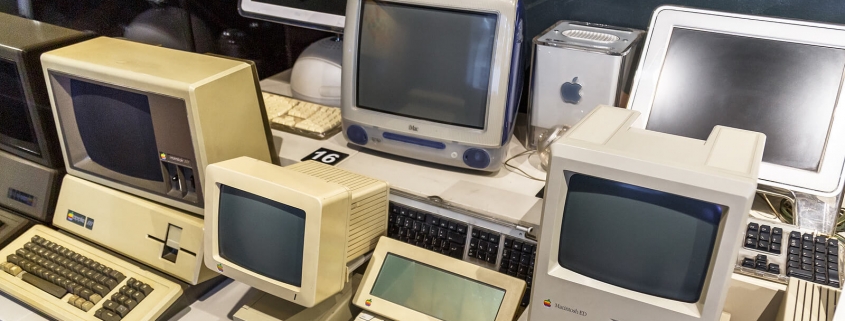In bygone days, information technology could be user vicious. Picture this: on The Australian, newspaper I spend four hours designing and editing a broadsheet-sized page. Then I press a wrong key and see screen after screen vanishing, never to return. There is no backup! In those days, newspaper tech was new. Editors had to punch in code for each change they made – different typeface, type size, column width… everything.
When the Sydney Morning Herald moved from metal printing to computerisation, whole pages would simply vanish in the process – often losing invaluable advertising and subsequent revenue.
Moving to PR, a sparkling new IBM PC clone raised productivity immediately, compared to the previous electric typewriter. Then one day, all our words vanished from the screen. Since word processing leader Word Perfect was a client, we called the ANZ manager. Where are our words! He suggested laconically that we scroll up, and there they were, hiding out of sight. Compare that to today’s tech support!
Computer screens were green in those days, and since our resources didn’t stretch to buying a PC with an internal disk, ours had two floppy disk drives. One ran a single application and required changing to switch to a different app. The other stored data. Everything happened at snail’s pace – hit a key and there was always a pause before the response. We dreamed of a future in which responses were fast and apps could ‘talk’ to each other.
A receipt for our second desktop computer shows a 40MB hard disk, one 5.25-inch floppy disk, MS-DOS 4.01 operating system and (wonder of wonders) at 14-in VGA colour screen. When we added a pre-owned fax machine to our tech arsenal (new ones cost a fortune), inevitably it broke down. We called in an expert and the conversation went thus: ‘OK mate, where’s your fax? There. Hey, I thought that was a washing machine!’
Yes, faxes were rather cumbersome in those days. Later we bought a new one for a staggering $A3,000 (the equivalent of $A6,600, $US2,180 or 4,058 Euros today) and installed it in my bedroom for 24×7 client responses. Trouble was when it began chattering at nights, I couldn’t resist staggering out of bed to check the message and its source – USA, Europe, Asia? Fascinating.
Among our early clients was a data storage company. For one case study, I visited a business that had installed the latest and greatest device. This filled an entire room and featured mechanical arms that would select a data disk and push it into the required slot. They called it ‘Bandit’ after the ‘one-armed bandit’ slot machines selling soft drinks that were popular in those days.
Tech salespeople and customers alike spoke with bated breath about the machine’s capacity – 1 terabyte! Incredible in those days. Today there is 2TB on my desktop with capacity for lots more at need. A single terabyte is 1,0004 bytes of information. Computer scientists have mapped out a future with petabytes, zettabytes – and yottabytes which represent 1,0008 bytes of info. Just imagine what computers will do with all that!
This blog post was originated by David Frost working at PR Deadlines.
PR Deadlines is an official member of the GlobalCom PR Network.

